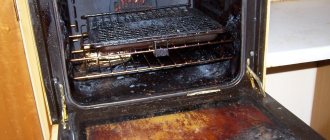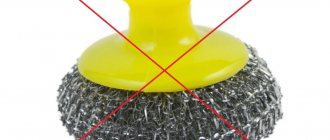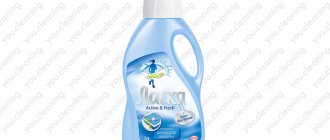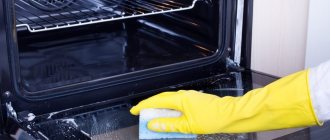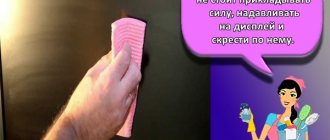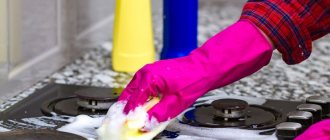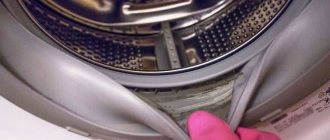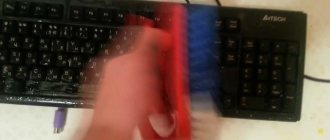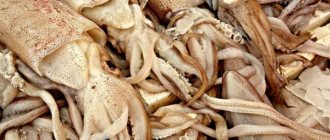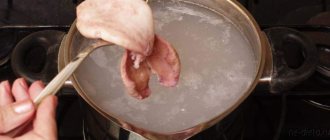.
Cleaning the kitchen is a long and labor-intensive process. It is important for every housewife that all kitchen appliances, household appliances and work surfaces are in perfect condition and sparkling with cleanliness: my home is my abode, as they say. But in order to ensure perfect order in the kitchen, it takes a lot of effort.
Cleaning the hood filter is the key to proper operation of the appliance.
It is especially difficult to wash kitchen hoods, because a large amount of grease, dirt and soot accumulates there, and it will not be possible to clean it all with a regular sponge and cleaning agent. After all, you need to wash not only the surface of the hood itself, but also all its components, such as grilles, filters and other internals. The better you wash the filters, the better your device will work.
Signs you need cleaning
A range hood is an indispensable attribute of modern kitchens, which not only removes unwanted odors, but also complements the composition of the interior. In order for the device to perform its functions well and have a beautiful appearance, it is necessary to carry out timely cleaning from the inside and outside, preventing fatty deposits from aging. When using a hood at home, it is recommended to clean it approximately once a month, but there are a number of signs that indicate the need for urgent care:
- On modern equipment, a special sensor is installed with the image of a grille icon or the letter “C”, which lights up at a certain degree of contamination. With such an indicator, it is not at all difficult to understand when to wash the device.
- When there is no sensor, conclusions about the required maintenance can be made based on changes in the hum of the hood. It is necessary to urgently clean it if the sound during operation is uncharacteristic, louder.
- Impaired odor removal. The smell goes away worse and slower than before, you need to choose a more intense mode to effectively eliminate it - cleaning is necessary.
- The easiest way to understand that the hood needs to be washed is by external inspection. By regularly checking visually how dirty the parts are, you can determine that it is time to clean them.
Preparing to clean the kitchen hood
Before you begin the cleaning procedure, you need to prepare everything you need for this: cleaning liquids or powders, hand gloves, dishes for soaking filters, brushes and sponges. It is better to cover the hob, cutting table, countertop, walls and floor - all surfaces close to the hood - with film or paper so as not to get dirty.
If you plan to use potent drugs, it is better to open the windows in advance and work in a well-ventilated area.
Reading the instructions
Before cleaning, you should read the instructions to clarify the following points:
- how to properly disassemble the hood;
- what materials the various parts are made of (this will help determine the choice of cleaning methods that are allowed and prohibited for different surfaces);
- what type of filters are installed: disposable or requiring cleaning;
- what detergents are preferable?
Disconnection from the mains
The hood can only be disassembled after turning off the power. Since the device is electrical, safety precautions must be observed.
General disassembly procedure
In order to thoroughly rinse not only the visible surfaces, but also the internal parts of the hood, it must be disassembled. The electric or gas stove over which the hood is located is covered with cloth, film or paper so as not to stain or lose the hood parts. How to properly dismantle hoods of different types and manufacturers is indicated in the instructions, but, as a rule, the following steps are followed:
- First you need to remove the top part of the case or decorative panel.
- After this comes the turn of the grease trap mesh, which protects the internal cleaning device.
- Next, remove the air or carbon filter.
- If the design provides for an air duct pipe, remove it.
- To make it easier to get to the internal parts, the hood is removed from its mounts to the cabinet, wall or ceiling.
- The motor and fan are removed after first removing the protective cover (this usually requires unscrewing the bolts).
Small parts and fasteners must be carefully folded so that there are no problems during reassembly.
Disassembling the hood
Before we understand how to clean a kitchen hood, we must disassemble it. This is not difficult. Before cleaning the kitchen hood from grease:
- Turn off the device.
- We find the locking latches (usually there are two of them), press the latch buttons. Carefully, holding with one hand, remove the filters. The devices may differ in all hoods, but for the most part the filter can be easily removed from the grooves.
- Further actions depend on the type of hood you have. Before cleaning the hood from grease, read the operating instructions, or ask your husband. If nothing else needs to be removed: a pipe, an air filter, then our task is to clean the removed filters, and rinse and clean the inside of the hood with a sponge or napkin.
Methods for cleaning the grease filter at home
The grease trap is the part of the hood that is most susceptible to contamination. When cooking intensively, it is better to clean the grate once a week or two, in this case you will not need to put in much effort and it will be easier to achieve the desired effect. Many manufacturers allow and even recommend washing the grease filter in the dishwasher; with regular cleaning, this measure is sufficient.
There are many ways that at home will help you cope not only with fresh dirt, but also with old fatty deposits.
Soap and soda solution
A solution of soda will help clean the filter mesh from plaque - it is a universal cleaning agent, environmentally friendly, effective and inexpensive. For 5 liters of hot water you will need a quarter cup of soda. As an alternative, take laundry soap, for which you rub half a bar on a grater or rub a bar of soap directly onto the grate. Liquid soap (a couple of tablespoons will be enough) or dishwashing gel will also work.
See also
TOP 20 methods and means for cleaning mold in the refrigerator
The solution is mixed in a basin or bucket, the filter is placed in it to soak for half an hour, after which the softened dirt is wiped off with a brush or sponge. The final stage is to rinse the mesh cells well under running water. If the procedure does not completely help get rid of contaminants, you need to repeat it.
"Mole"
The “Mole” type pipe cleaner is radical, very effective, but not at all beneficial for the filter material, so it should not be abused. It is recommended to use “Mole” no more than once every six months only if the fatty deposits are so deeply ingrained that no other product can cope with them.
The grease trap is completely filled with boiling water, to which half a glass of anti-clog agent is added. It is enough to soak for 3 minutes; if you hold it longer, you can damage the grate material. After this, the filter must be rinsed thoroughly and the solution poured into the toilet.
Grease remover
You can see many different grease removers on store shelves. Consultants familiar with the range will help you choose the cleaner that is most suitable for a particular hood. You can read the composition, instructions and independently choose a grease remover that is satisfactory in price and quality.
"Bagi Shumanit"
The cleaning product from the Israeli manufacturer is known for its effectiveness and speed of action. Recognized as environmentally friendly and safe for the environment. Available in the form of spray, gel and powder. The use of "Bagi Shumanit" is prohibited for surfaces made of aluminum, painted parts, and Teflon coating.
The concentrate is applied to the grille of the hood filter for a short time (according to the instructions, a few seconds are enough), after which it is washed off with a sponge and rinsed well under running water. If necessary, repeat the procedure.
The advantages of the product include its instant action and the ability to cope even with severe fatty contamination. It is important that you do not rub the surface to be cleaned with force.
The biggest disadvantages of the product are its toxicity and strong unpleasant odor. You should only work with protective gloves and with the window open. Before cleaning, be sure to put all food out of reach; you must not allow the product to get on the food.
"Bugy the Giant"
Another remedy for Israeli, designed to remove old and burnt fatty stains. In order to remove grease, “Giant Bugs” is applied to the surface of the hood filter for a few seconds, after which it is washed with a damp cloth. The consumption of the cleaner is very economical due to its convenient spray dispenser and liquid consistency.
Buggy the Giant is also very aggressive, so the use of gloves is strictly necessary, as is ventilation.
"The Sparkling Kazan"
The packaging indicates that the product is intended only for cleaning cast iron cauldrons, but it copes with old grease on other surfaces. Apply the cleaner to the grille of the hood filter for 15-30 minutes, then rinse with water and neutralize the washed surface with a weak solution of citric or acetic acid. If the contamination is severe, you should pour the product sparingly and leave it for a longer time; you can repeat the procedure several times. Use with rubber gloves.
Oven Cleaner
Oven Cleaner from Amway is designed to clean ovens, stoves, trays and grates from old traces of burnt fat, food and burnt sugar. To remove dirt from the hood filter, shake Oven Cleaner well and apply it to the surface with a brush, let it sit for 30 minutes, after which you need to wash the mesh by wiping off the softened dirt with a rag or sponge soaked in hot water. A very dirty hood filter mesh may require reapplication. The gel is not used for cleaning aluminum, painted and chrome surfaces.
Terms of use
The principle of using any grease remover is the same. The product is applied to the contaminated surface of the hood filter, left for about half an hour, then wiped with a damp sponge. The mesh is washed with water. You should definitely use protective rubber gloves, otherwise the skin on your hands may be seriously damaged.
Boiling in soda solution
A boiling soda solution effectively combats old fat deposits. For this method, you only need a pan large enough to fit the hood filter completely or at least halfway, water and soda itself.
Add a little soda to boiling water at the rate of 1 glass per 10 liters of liquid. After dissolving, the mesh is immersed in water and boiled over low heat for 10-15 minutes. If the grate does not fit completely, first process one half, then the second. In case of very heavy contamination, the procedure is repeated.
See also
Where do Drosophila midges come from and how to get rid of them
Using laundry soap
Laundry soap is rubbed on a fine grater so that it dissolves more easily and added to boiling water. The hood filter mesh is placed in the solution for a quarter of an hour. After softening the fatty contaminants, the filter must be washed with a sponge or scraper.
How to wash the filter with a 9% vinegar solution
The concentration of the vinegar solution depends on the degree of contamination. For fresh grease stains, just mix vinegar and water in a one-to-one ratio. For old grease, it is better to use pure vinegar. Apply vinegar to the hood filter with a sponge or rag, thoroughly wetting all contaminated areas, and leave for 15 minutes. After soaking, the vinegar should be rinsed off with clean running water.
Using lemon
If you want to wash the hood filter without using aggressive chemical cleaners, you can use a natural remedy - lemon juice. This will require several fruits. The lemon is cut in half and the cut is rubbed onto the surface of the grate. After 15 minutes, the mesh should be washed with a sponge and running water. In case of old dirt, it may be necessary to repeat the cleaning several times.
How to clean the case
Cleaning the outside of the hood body without disassembling the whole hood is very simple, since these surfaces are not hard-to-reach areas. It is best to do this after each cooking, before the fat drops have time to dry, this will remove them faster. You can immediately wipe off spills from the outside of the hood with a paper towel or damp cloth, maintaining a flawless appearance and saving a lot of time.
Household chemicals for cleaning hoods
Professional products are used for old stains. If the hood has not been treated for more than six months, home methods cannot cope with the problem. The following products are needed: Fairy, Shumanit, Green&Clean Professional, AmWay, Sano Forte Plus, Topperr, Mister Muscle, Silit Banks, Mole. They certainly have their advantages: they are narrowly targeted (they act on a specific type of pollution), require virtually no effort, and are used economically. But at the same time, these solutions can be aggressive towards metal and other materials from which the hood is made.
When using them, you need to wear gloves on your hands. You will also need sponges, rags, and a towel.
The method of processing components does not require more than 10 minutes and consists of soaking the hood parts in professionally prepared solutions. If there are no contraindications in the instructions, you can wash the grill and accessories in the dishwasher.
The mole cleaning method is considered the most radical. It can be used a maximum of a couple of times during the entire service life of the hood. It involves immersing the parts in Mole's solution (be sure to wear gloves while doing this). The reaction begins immediately. After treatment, you need to rinse the hood parts under running water for a long time. The alkali contained in the product should not remain on the components; it “eats” the metal.
What not to use
Depending on the material of the housing, there are restrictions on the use of methods for cleaning it. You can eliminate contamination without spoiling the appearance of the device by remembering a number of methods and means that must be excluded.
Alcohol based products
In order to wash the outer part of the hood, do not use products that contain alcohol. After cleaning with their use, the material may become dull.
Solvents
Strong solvents will also cause dulling of the surface. It is better to choose a neutral cleaner.
Aggressive cleaning agents
Aggressive cleaning products will help quickly dissolve grease, but will cause irreparable damage to the appearance. They should not be abused. This is another reason why you should not delay cleaning the visible surface of the hood body, but should do it regularly. In this case, a damp dust cloth and dishwashing gel and liquid soap against fresh grease stains will be sufficient.
Hard sponges and brushes
Hard sponges and brushes, especially metal ones, are strictly contraindicated. If you rub the body with them, especially with force, the surface will easily be scratched.
Cleaners containing abrasive particles will have the same effect, so they should also be avoided.
Dishwashing liquid
To clean the hood body, you can use any liquid dishwashing detergent. It will not damage the surface, but will cope with grease stains. Gently wipe the body parts with liquid applied to a soft sponge. After this, rinse off the product with a clean cloth and wipe dry.
Laundry soap
Regular brown laundry soap will successfully remove stains. Simply lather the sponge and wipe the visible surfaces, then rinse off the cleaning agent. Do not wet the cloth with water; use a well-wrung out damp sponge to prevent liquid from getting inside the case.
Common Mistakes
What NOT to do if you clean the hood yourself:
- Turn on the device immediately after washing if you cleaned the inside of the housing. The fan and motor must dry out.
- Wash the disposable filter. They only need to be replaced.
- Clean the plastic filter with steam or pour boiling water over it. High temperatures can deform plastic.
- Use stiff brushes, abrasive cleaners and steel wool to clean the exterior of the cabinet. A smooth surface can be scratched, especially if you rub hard.
- Use alkaline cleaners to clean aluminum filters.
- Use alcohol-containing detergents and solvents to clean the cabinet. After such cleaning, the surface may become dull.
About island hoods - description, installation, pros and cons
About MBS hoods - review of models with characteristics
Related Posts
How to clean the fan and motor
The hood fan and motor should be cleaned every two years. To find out how they are attached and how to remove them correctly, you must carefully read the instructions. As a rule, there are no difficulties.
Having taken out the fan, you need to wash the impeller with soapy water or wipe it with alcohol. It is acceptable to use any detergent, with the exception of overly aggressive or abrasive ones, so as not to damage the surface. The washed part must be dried before reassembly.
Caring for the engine consists of wiping it of soot and dirt and renewing the lubricant.
Last resort: use a professional drain cleaner
It happens that it is not possible to cope with cleaning the hood, namely the filter, using the means described above, as the contamination turns out to be so complex. There is one way that will help even in this case.
- Purchase a special product at the store for clearing blockages in pipes. You will also need a metal container of a suitable size, such as a stainless steel sink.
- Read the instructions on the package carefully. Strictly following it, prepare the remedy.
- Wear rubber gloves. Close the sink drain, pour in the prepared product and place the filter there.
- You will see how the product begins to react with the fat on the filter. When all contaminants have dissolved, rinse the filter under running water for as long as possible so that the remaining dirt and special product completely disappear.
Sometimes, in particularly severe cases, only pipe cleaners can help.
Note! The active ingredient in pipe cleaners is alkali, which is aggressive to metal surfaces. Therefore, you can clean the hood with them no more than 2 times during the entire operation of the device, only as a last resort.
Features of air duct care
When “generally cleaning” the hood, you also need to pay attention to the air duct pipe. The pipes are not so narrow that settled dirt will hinder the operation of the hood, but grease particles accumulate on the walls, which are best removed regularly. The air duct is cleaned approximately every two years.
Air ducts for hoods can be plastic or corrugated. Duct maintenance will vary depending on the type of duct.
Plastic rectangular or round
Plastic air ducts are made of rectangular or round cross-section. Their dismantling is not difficult since they consist of individual plastic segments that are easy to assemble and disassemble. Wash thoroughly with soapy water, then with running water, and dry well before reinstalling.
See also
How to permanently get rid of spider mites on indoor plants
Corrugated
A corrugated air duct is somewhat more difficult to maintain, since more contaminants settle on the corrugated surface than on a smooth plastic one. Made of aluminum, such an air duct is easy to install and costs less, which is why many people prefer them. If the pipe is long and difficult to clean, you can simply replace it with a new one.
The corrugated air duct can be cleaned without completely dismantling it. To do this, separate its end from the hood and clean it with a brush and soapy water, as long as the brush is long enough.
Steam cleaner
Steam will help you easily deal with fat deposits by dissolving them. At the same time, the steam cleaner does not provoke corrosion. After steam treatment, the pipe is washed with a soap solution, clean water and dried.
"Mole"
“Mole” has a less gentle effect, but it will effectively wash away all contaminants. Apply it to the contaminated surface of the air duct for half an hour, then wash off. If necessary, process in this way several times.
Removing dirt from buttons and inner surfaces
When dirty, buttons and control panels are cleaned with specialized sprays. The cleaner is sprayed onto the contaminated area and wiped dry with a napkin. The most commonly used folk remedies are hydrogen peroxide, ammonia, anise drops, and nail polish remover. Apply the product to a cotton pad or swab and carefully wipe the buttons, remembering to press them and treat the connector. An old toothbrush can help remove dried grease.
The inner surface of the hood should be washed once a quarter, and it can be treated with the same products as the body. If the pollution is old, “Mole” will cope with it, but it should not be abused. After cleaning, thoroughly wash the surface with clean water and dry or wipe dry.
Other cleaning methods
A dishwasher will help you quickly and easily get rid of grease from your hood . The unit can use very hot water, which is not possible during manual cleaning. The machine will effectively cope with minor dirt. If the condition of the filter is somewhat neglected, you can first soak it in one of the solutions described above or do several washing cycles.
To quickly remove old grease, use any product to remove blockages in sewer pipes. The principle of operation of the same “Mole” - the breakdown of fatty particles and the elimination of wen - is exactly what we need.
The steam generator perfectly removes sticky grease from the grate. It does not deal with too old stains right away, but it is quite suitable for systematic, timely cleaning.
Folk remedies
If the housewife does not want to use chemicals, or they are not at hand, you can always resort to traditional methods. They are more environmentally friendly, less harmful to health, and often cheaper than professional cleaning powders or gels. If the contamination does not succumb the first time, you can try repeating or combining methods.
Bar soap
It is best to take regular brown laundry soap with an acid content of 72%. To better prepare the soap solution, grate the bar. The part to be cleaned, depending on the size and degree of contamination, is soaked in the solution or the mixture is applied with a sponge to the surface. Leave for some time to act, after which the softened dirt is removed with a sponge or plastic scraper.
Lemon juice
The lemon is cut and the dirt is wiped with the pulp. Instead of fresh fruit, you can dilute citric acid.
Steam
The steam generator will help both dissolve fat on the body in a way that is gentle on the surface and reach hard-to-reach places, such as the inside of the air duct pipe. After exposure to the deposits with steam, all that remains is to wipe off the softened dirt with a cloth.
Baking powder for the dough
To combat fat deposits, you can take a packet of baking powder. The powder is dissolved in water and applied to the contaminated area for half an hour. As the solution acts on the stain, the baking powder turns yellow, absorbing fat. After cleaning, rinse with water.
Mustard powder
Mustard powder is mixed with water and applied to fat deposits with a sponge. After a quarter of an hour, the solution is washed off with warm water.
How to wash the probe?
The probe is the main working part of the exhaust device , which is responsible for capturing fats and fumes. It is this part that gets dirty the fastest and requires effective cleaning measures.
Treating the mesh with soda solution
Baking soda is a universal substance suitable for removing most stains in the kitchen. It effectively breaks down fats, and at the same time allows you to save on expensive household chemicals.
Instructions for use:
- Prepare a spacious basin - the grilles and filter should completely fit into it.
- Pour 5 liters of water into a basin and boil on the stove.
- After boiling, add 0.5 cups of baking soda and reduce the heat to low, making sure that the liquid does not stop boiling.
- Place a filter with grids in boiling water and boil for 5 minutes.
- After 5 minutes, check how well the fat is removed. For old stains, continue boiling for another 5-10 minutes.
- Remove the parts from the basin, cool slightly and wash with soap and then running water.
Advice! If you don’t have a large boiling container, place the grates vertically and boil on both sides in turn.
Soda is an easy and simple way to clean grease from your microwave.
Treatment of neglected plaque with ammonia
Ammonia works well for ingrained fat, which even boiling soda cannot get rid of. Cleaning is carried out by soaking.
They work in a mask, since ammonia has a pungent odor and acts as an aggressive irritant for the mucous membranes.
How to clean:
- Dilute 0.5 cups of ammonia in 3.5 liters of hot water.
- Dip dirty grates into the solution and leave to soak for 1-1.5 hours. If boiling water is used, soaking is reduced to 5-10 minutes.
- Softened fat deposits are cleaned off with the hard side of a sponge or a soft scraper, and the parts are washed under running water.
Advice! Do not forget to open the window for ventilation during hygiene measures so that ammonia can ventilate.
How to clean a carbon filter
Unlike a grease filter, a carbon filter is disposable; it is not cleaned, but replaced with a new one. The activated carbon inside the filter, having exhausted its capabilities, stops working properly. The period for replacing the charcoal filter is specified by the manufacturer; as a rule, it lasts for several months, but during intensive cooking with the hood on, a new filter may be needed earlier.
To replace the carbon filter, remove it from the special slot and insert a new cassette. On sale you can find both branded filters from the manufacturer and universal analogues that are cheaper.
To extend the life of the carbon filter, there is a little trick. The hood should not be turned off immediately after cooking; it is better to leave it on for 10 minutes. During this time, the coal will dry out, evaporating the liquid it absorbed during cooking. If accumulated moisture is not removed, the coal will cake and lose functionality faster.
How often should you clean your hood?
The frequency of cleaning depends on how often you use it, how long it runs, and how much polluted air it has to move.
The deadlines are approximately like this:
- The filter (mesh, grease trap) is the part that gets dirty the most and quickly. It has to be cleaned on average every 40-60 hours of operation of the hood. Some filters cannot be cleaned - they only need to be replaced with new ones.
- The outside of the housing (bottom around the filter and front), buttons and lamps must be wiped when dirty.
- The air duct, motor and fan need to be cleaned less often. It is enough to do this once every 1-2 years.
How to know when it’s time to clean your hood:
- If there is a pollution sensor, it will light up. Looks like the letter "C" or a hash mark.
- The hood began to work worse: it hummed louder, slower and removed odors worse. For example, if earlier, when cooking borscht, the appliance could cope with the aroma at speed 2, but now you have to turn it on speed 3.
- Visually - if you see that the filter is very dirty. Periodically (at least once a week) look under the hood to check cleanliness.
Why is it important to clean your hood promptly?
Dirt settling on the filter slows down the passage of air through it. As a result:
- to remove odor, you have to turn on the hood at a higher speed and leave it running longer;
- electricity consumption increases;
- the noise of the hood increases (because the hood needs to work at increased speed);
- equipment wear accelerates (the hood will break earlier).
The more dirt sticks to the filter, the faster it will be overgrown with new plaque.
Clean and dirty filters
In addition, fat deposits are a favorable environment for the development of microbes. And externally, a dirty and sticky body looks simply ugly.
